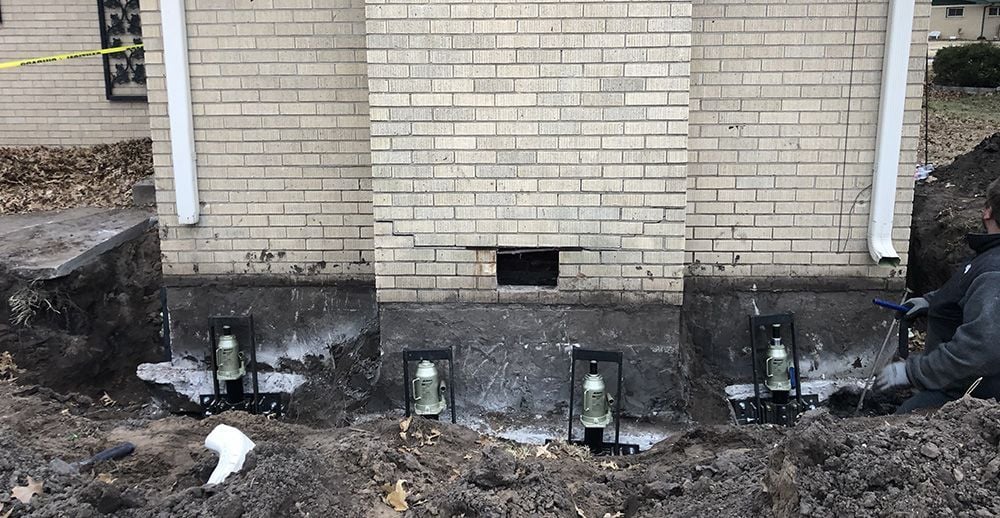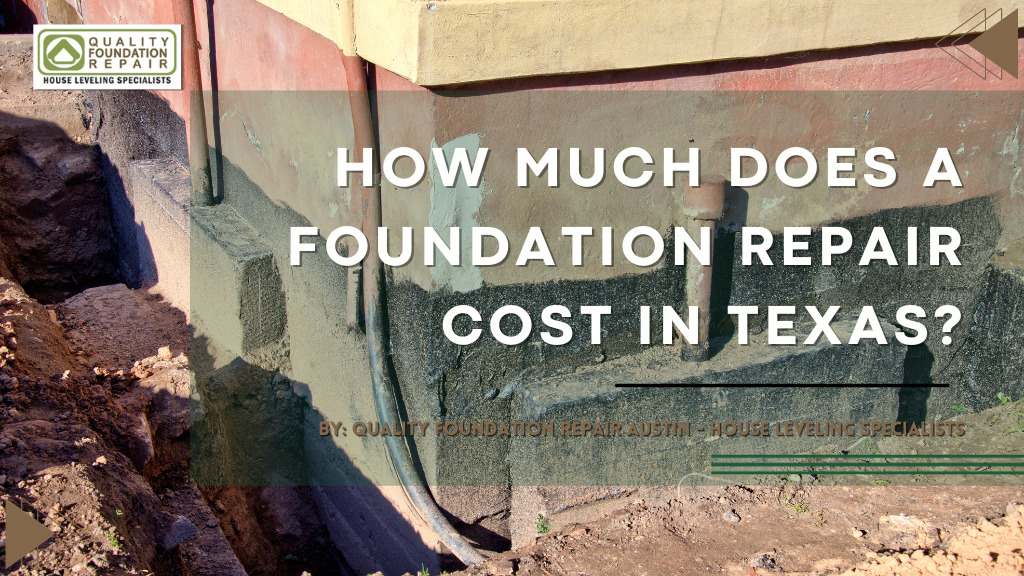Checking Out Different Approaches of Foundation Fixing for Various Soil Kinds
Foundation repair service is a critical aspect of preserving structural integrity, especially when thinking about the varied obstacles postured by different soil types. The complexity of dirt behavior under differing conditions necessitates a tailored technique to fix, making sure ideal remedies such as helical piers for unpredictable soils or chemical cements for natural layers. Nonetheless, the question continues to be: how do we establish the most effective technique for each and every one-of-a-kind situation? Understanding the interaction in between soil attributes and repair service techniques is critical, yet there is even more to reveal in the mission for sustainable remedies. What factors really dictate the selection of technique?
Recognizing Dirt Kinds
Soil kinds play an important function in the security and longevity of building foundations, making it crucial for property owners and building professionals to understand their features and habits. The communication between soil and foundation can figure out the structural stability of a structure. There are a number of dirt types, each with distinct physical properties that impact just how structures are made and preserved.
Granular dirts, such as sand and crushed rock, offer excellent drainage and are usually considered secure. They have high load-bearing capabilities, which can support much heavier structures. These soils can shift if not compressed appropriately, leading to prospective settlement concerns. In contrast, natural dirts like silts and clays display various habits. These soils tend to retain moisture, and their load-bearing capacity can differ significantly with changes in wetness content.
Rocky soils, recognized for their toughness and stability, deal exceptional assistance for structures but may need specialized equipment for excavation. Conversely, fertile soils, which are a well balanced combination of sand, clay, and silt, commonly supply beneficial problems for structure support as a result of their moderate water drainage residential or commercial properties.

Recognizing these soil types is vital for choosing suitable foundation repair service methods, making sure the toughness and safety of frameworks with time.
Obstacles With Extensive Clay
Amongst the numerous soil types, large clay provides distinct challenges for foundation security as a result of its tendency to go through significant volume modifications with moisture variant. This type of soil swells when wet and contracts when completely dry, which can put in significant pressure on frameworks. These fluctuations can cause foundation cracking, heaving, and negotiation issues, posing considerable risks to the structural honesty of structures.
The difficulties with expansive clay are aggravated by its plasticity index, which determines the soil's ability to change form and quantity. A high plasticity index shows greater capacity for movement, raising the likelihood of damage to structures. This is specifically troublesome in regions experiencing extreme or frequent weather adjustments, where cycles of damp and completely dry conditions are typical.
Additionally, the depth of expansive clay layers can differ, making complex the analysis and planning of suitable foundation repair methods. The unforeseeable nature of its motion demands specialized engineering remedies to alleviate dangers. Furthermore, extensive clay can impact utility walkways, driveways, and lines, further making complex repair service efforts. These complexities need a detailed geotechnical evaluation to make Read More Here sure reliable foundation fixing techniques are executed, highlighting the importance of addressing large clay difficulties with experience and care.
Solutions for Sandy Soils
Sandy dirts, defined by their big bit dimension and low cohesion, present distinct obstacles for structure stability due to their propensity for shifting and disintegration. By anchoring the structure to deeper, much more secure dirt layers, these systems can give the necessary support to counteract the shifting nature of sandy soils.
An additional recommended approach is the application of soil stabilization techniques. Chemical grouting, for instance, includes infusing a supporting agent into the soil, which improves communication and reduces permeability. This process helps to strengthen the sandy substratum, therefore decreasing the danger of disintegration and activity.
Furthermore, installing proper drainage systems is essential in sandy soil conditions. Making sure ample drain can protect against water accumulation around the structure, which typically intensifies disintegration and dirt displacement. Techniques such as French drains pipes or surface area grading can be used to direct water far from the building perimeter.
Attending To Clearing Up in Loamy Soils
Fertile soils, recognized for their balanced mix of silt, clay, and sand, supply a fertile base for several frameworks but can in some cases bring about foundation settling due to their unique make-up. This well balanced texture provides exceptional drainage and nutrient retention, making it optimal for farming and landscape design. This very same feature can become problematic for structures, as shifts in dampness material can trigger the dirt to expand or contract, leading to resolving.
Accurate dirt testing is crucial to determine the specific composition and dampness material of the loam. As soon as information is collected, applying correct drain services is crucial to keep constant dampness degrees, therefore lowering the danger of soil tightening or expansion.

Cutting-edge Repair Work Strategies
In the realm of structure repair, cutting-edge techniques are consistently being established to resolve the complicated challenges presented by various soil problems. As dirt types vary substantially in their structural residential or commercial properties, standard techniques may not always are enough. The introduction of brand-new innovations in structure repair work offers extra tailored solutions, guaranteeing stability and durability.
One noteworthy development is making use get redirected here of helical piers, which are specifically efficient in unstable or large soils (foundation repair okc). These piers are screwed right into the ground up until they get to a stable layer of soil, using solid support for the structure over. This approach decreases disruption and is adaptable to various dirt kinds, making it a flexible remedy
An additional cutting-edge technique is the application of polyurethane foam shot. This approach entails infusing high-density polyurethane foam underneath the structure to load gaps and stabilize the structure. It is a much less intrusive option to traditional foundation, offering quick setup with marginal disruption to the surrounding location.
In addition, dirt stablizing methods, such as the usage have a peek here of chemical cements, have obtained traction. These substances improve dirt stamina and lower leaks in the structure, protecting against future changing. Jointly, these cutting-edge repair strategies give reliable options for the varied challenges posed by varying dirt conditions.
Final Thought

Structure repair service is a crucial element of preserving structural honesty, specifically when taking into consideration the varied difficulties presented by various dirt kinds (foundation repair Oklahoma). The complexity of soil habits under varying conditions requires a customized approach to fix, ensuring ideal remedies such as helical piers for unstable soils or chemical grouts for natural layers. By securing the structure to much deeper, more secure dirt layers, these systems can provide the essential assistance to neutralize the changing nature of sandy soils
Foundation fixing requires careful consideration of soil types to ensure security and longevity. Chemical grouts boost soil stamina and reduce permeability in cohesive soils.